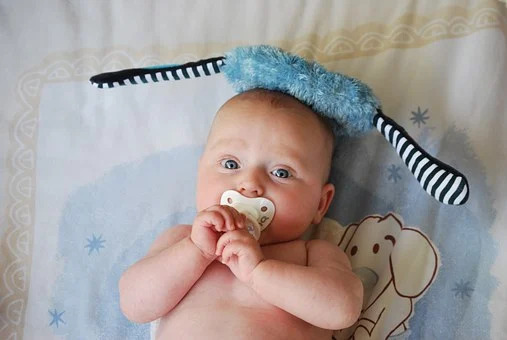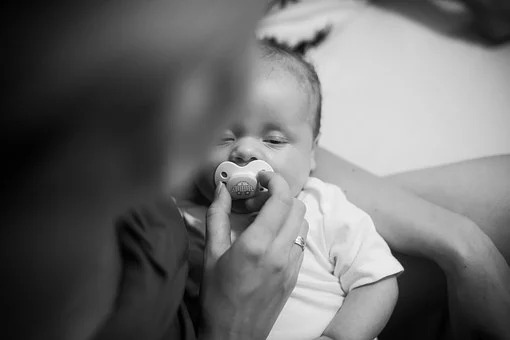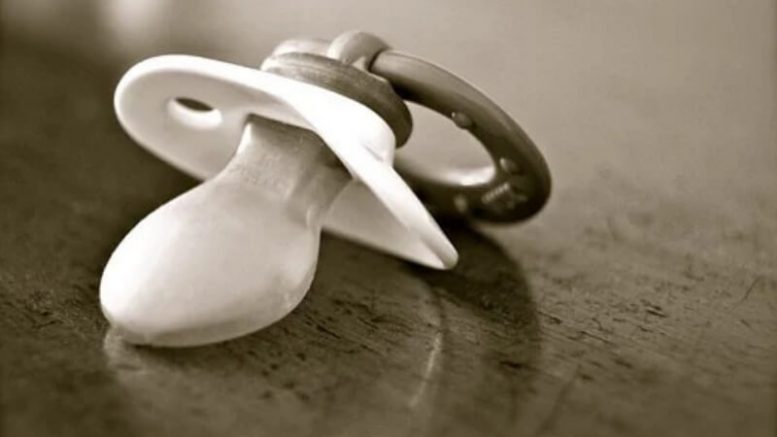Why won’t my baby take a pacifier, this question comes very often from many first time parents who struggle to calm their new baby down and don’t realize what is wrong. In this article we will go over the reasons why babies refuse pacifiers and what to do about it.
For many parents, their child’s pacifier is a lifesaver! Often used as part of a baby’s bedtime routine, pacifiers satisfy a baby’s natural sucking reflex.
But, if you find yourself struggling to get your baby to accept a pacifier, you aren’t alone. Pacifiers can also be one of the more complicated things that, unfortunately, some children will either love or hate!
Yet, if your baby’s feeding routine has been established, you may feel that now is as good a time as any to introduce a pacifier.
Here we look at possible reasons why some babies may not take to a pacifier. We then offer a way around this, with a method to get your baby accepting a pacifier in no time.
Why Won’t My Baby Take a Pacifier
Why Do We Offer Babies Pacifiers?
Though some parents will never offer a pacifier to their baby, they are, in fact, the most popular means of soothing a baby. A self-soothing tool, as such, pacifiers also prevent babies from sucking at their fingers.
No longer seen as a bad thing, now pacifiers are considered to provide many benefits, ensuring that they are used correctly. This means not introducing them too early, waiting until feeding is established, but also not allowing older children to use them.
More so, if a pacifier is used safely and hygienically, it can help a baby to fall asleep on their own easier. Studies also suggest they seem to reduce the risk of SIDS; that is, Sudden Infant Death Syndrome.
Yet, for many parents, when their baby refuses to accept a pacifier the first time around, it can lead to frustration on both baby and parents’ behalf.

The Most Common Reasons for a Baby Rejecting Their Pacifier
Before you can work on establishing a pacifier into your baby’s routine, you’ll need to discover the reason why they may have such an aversion to their pacifier.
There are several common causes why babies tend to reject pacifiers. These include:
The Timing is Wrong
Some parents offer their baby a pacifier too many times or don’t quite read the cues their baby makes. This can often be the most common problem for a baby refusing to take a pacifier right at the very start.
The problem here is that babies can and indeed will cry for a variety of reasons. However, if the pacifier is given to them when they’re expecting something else, they’ll soon realize after a few sucks that it’s not going to make them any happier, and they’ll spit it out!
The Size and Shape are Wrong
With so many types of pacifiers sold on the baby market, it can be a mind field trying to select one choice for your baby. From novelty pacifiers and character-themed ones to those that flash or sing, for many first time parents, navigating the world of pacifiers can be a nightmare!
Related: When to stop swaddling | What to do when newborn is not eating
However, if you select a pacifier that is too big or one which is not shaped for your baby’s mouth, they will soon let you know by refusing it.
The Taste is Wrong
As most pacifiers are teat shaped and design to mimic the breast, most parents assume they will all be fine when it comes to taste. Yet, pacifiers, especially those new ones, can have a sour taste and one which is unfamiliar to a baby.
For this reason alone, a baby will refuse to suckle on something which is new to them and has no trace of a familiar scent on it.

Tips to Help Your Baby Get Used to Their Pacifier
When you become aware of why your baby refuses to take their pacifier, you will be in a better position to sort this problem. Though this make take a little practice, if you persist here, you’ll soon notice a difference within days, if not hours.
- Try holding your baby close to you, as you would do when you are about to begin a feed. By allowing your baby to nest snuggling in the crook of your arms here, you naturally position them in the flexed position. This encourages them to suckle.
- Consider dipping the pacifier in formula milk, or breast milk, whichever is suitable, before you offer the pacifier.
- Place your index finger into the center of the pacifier. The is the hole behind the mouth guard. Then lightly touch your baby’s lower lip, repeating this gentle rubbing motion until they open their mouth. This is referred to as encouraging their rooting reflex.
- When your baby readily starts to open their mouth in response here, gently insert the pacifier. Do this with a firm, but ultimately a gentle amount of pressure.
- As you do this, aim to stroke the pacifier down the central grooves of your baby’s tongue.
- You should see the tongue now begin to make a cup shape as the sides elevate.
- At this stage, stop and allow your baby the chance to hug the pacifier using their tongue and lips. They may even suckle a few times.
- Repeat this action regularly until your baby takes the pacifier from you naturally.
The Best Times to Attempt Offering A Pacifier to Your Baby
If you’ve been finding it a struggle to get your baby to take to their pacifier, it’s a better idea to practice at certain times. This means they’re more susceptible to using the pacifier and that your attempts will be less stressful for both you and them.
It also makes it more likely they’ll want to use the pacifier in the long term.
For this reason, experts suggest that pacifiers should be offered to those baby’s that are tired or suffering from colic.
As a good example here, some parents use a pacifier when a baby is hungry, hot, or cold or even needs their diaper changing. But, a baby will take a few sucks and realize this isn’t going to solve anything.
So, the more you keep offering it to them for such reasons, the harder it will be to get them to take it when they need it the most!
For many, by repeatedly offering a pacifier at the wrong time, there’s even a possibility that your baby will never want anything to do with a pacifier ever again.
So, by giving your baby a pacifier when they are visually slightly drowsy, practicing the above method every few hours, your efforts may soon just pay off.


